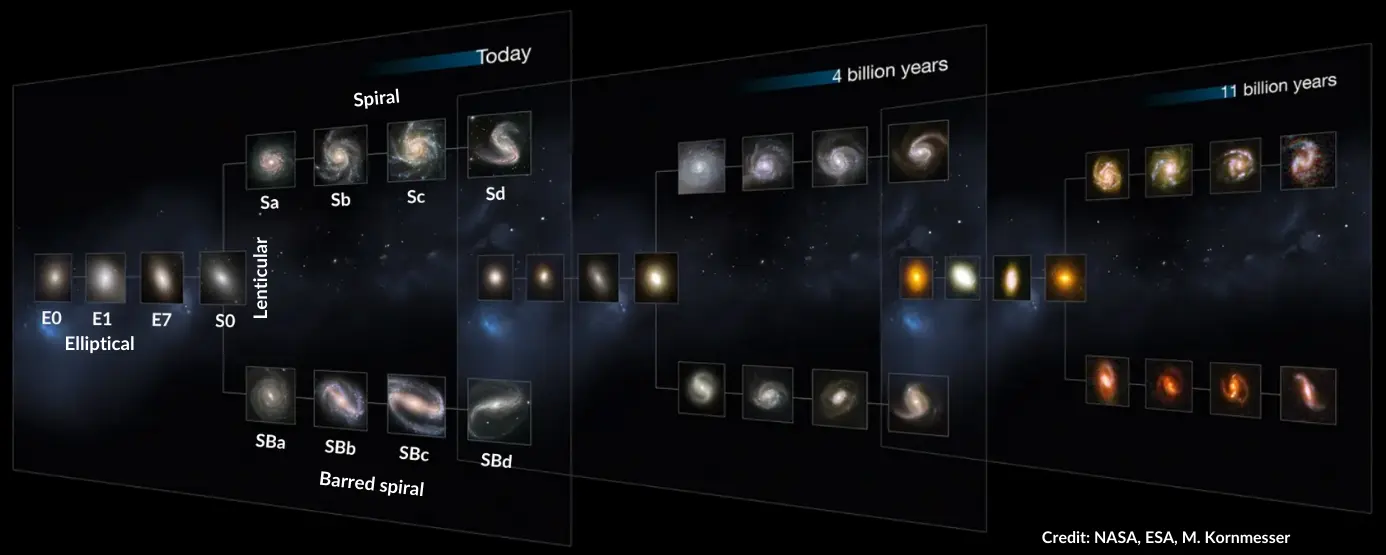- English
- বাংলা
Table of Contents
This is an old revision of the document!
2. Galactic age
Socrates: Yesterday, Ravi gave us an overview of the Particle Age and mentioned that his explanation wasn’t nearly enough to truly “understand” it. To really grasp it, there’s no way around the math. Today, Shashi is supposed to start discussing the Galactic age, and this will continue as long as we’re on the banks of the Tsangpo river. So, how do you want to begin?
Shashi: Since it’s already late at night, we’re by the Tsangpo’s bank, and the sky is clear, we could start by taking a picture of a galaxy with the telescope.
Ravi: Good idea. Shashi, then, why don’t you handle Ashvin-1?
Socrates: Ashvin-1? What does that mean?
Ravi: We have two telescopes, both named after the twin stars, Ashvin 1 and 2, known as the twin brothers in the Gemini constellation.
Shashi: After mounting the telescope, I’ll connect it to the Unistellar app from my phone—see here. Now, I’ll go into the app’s catalog and select a galaxy; once I tap on “GoTo,” Ashvin will start moving. I’ve joined as the operator using my phone, and if you all connect to the same app as observers, you’ll be able to see on your phones what the telescope is viewing.
Juno: Yes, I can see it. I think we should target the Whirlpool Galaxy.
Shashi: Alright, tapping on it now. Everyone can see Ashvin-1 moving towards the Whirlpool Galaxy. It’s there now. The galaxy isn’t visible yet because we’re in live mode, not accumulating photons. Once I tap on “Enhanced Vision,” Ashvin will start collecting light. Here we go! You can see the exposure time ticking below; it’s already at 7 seconds. The Whirlpool Galaxy is already faintly visible. The more light we accumulate, the clearer the galaxy will become.
Socrates: I see—this is actually a merging of two galaxies.
Shashi: Up front is the Whirlpool, known as Messier 51, which spans about 75,000 light-years. Just behind it is a small dwarf galaxy, NGC 5195, also called M51b, about 15,000 light-years in size. Both are around 30 million light-years away. The bluish light comes from young stars, while the reddish glow comes from older stars. Our universe now contains roughly a trillion galaxies, all of which formed within the first four billion years of the universe’s 14-billion-year history.
Socrates: So, if the universe’s first 300,000 years were the Particle Age, then from then until around four billion years of age was the Galactic Age. But I don’t see any resemblance between this vast structure of gas, stars, and dust and the universe at 300,000 years old. Let me clarify. Yesterday, Ravi showed us an image of the universe at 300,000 years old. He demonstrated that the universe was then a single, boring cloud of gas with almost uniform temperature throughout. There were slight temperature variations, but they averaged only around 300 microkelvin. How did such enormous galaxies emerge from such a bland gas cloud in just four billion years? And not just a few galaxies—around a trillion, or perhaps even more.
1. From Gas to Galaxy
2. Milky Way

3. Classification of Galaxies

4. Active Galaxy

5. From Velocity to Age

